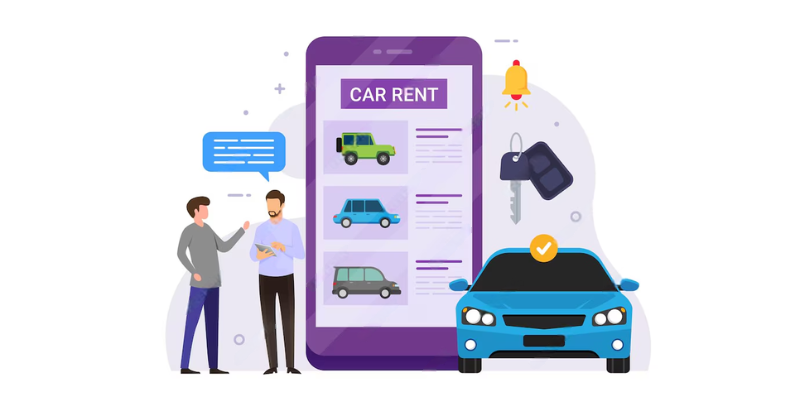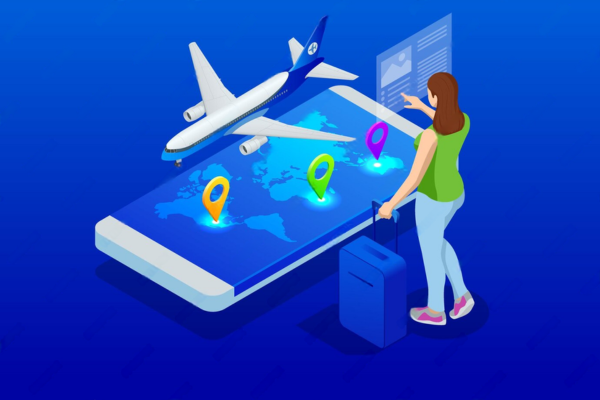Choosing the Right Tech Stack for Car Rental Apps

Strong 8k brings an ultra-HD IPTV experience to your living room and your pocket.
The car rental industry has evolved significantly with digital transformation. Businesses looking to create seamless, user-friendly rental services need a robust technology stack to support their app. Choosing the right tech stack is crucial as it directly impacts app performance, security, scalability, and user experience. This guide will help you understand the essential components of a tech stack for car rental apps and how to make the best choice for your project.
Understanding the Tech Stack Components
A tech stack consists of various tools, frameworks, and programming languages used for development. It can be categorized into:
1. Front-End (Client-Side) Development
2. Back-End (Server-Side) Development
3. Database Management
4. Third-Party Integrations
5. Hosting and Deployment Services
Each of these components plays a vital role in ensuring a smooth and efficient user experience.
1. Front-End Development Technologies
The front-end is responsible for user interactions and the visual appeal of the car rental app. It should be intuitive, responsive, and accessible across devices. Some of the top choices include:
Popular Front-End Frameworks
- React.js - A JavaScript library by Facebook, ideal for building dynamic user interfaces with reusable components
- Vue.js – A lightweight and flexible framework with a gentle learning curve.
- Angular.js – Developed by Google, suitable for large-scale applications with complex features.
Mobile App Development Technologies
- Swift (for iOS) – Apple’s powerful and efficient programming language.
- Kotlin (for Android) – A modern alternative to Java, preferred for Android development.
- Flutter – A cross-platform framework using Dart, perfect for developing apps for both iOS and Android with a single codebase.
- React Native – Enables building cross-platform apps with native-like performance.
2. Back-End Development Technologies
The back-end is the backbone of the car rental app, managing business logic, user data, and security. The right back-end framework ensures smooth operation and robust security measures.
Back-End Programming Languages & Frameworks
- Node.js with Express.js – A JavaScript runtime that provides high performance and scalability.
- Python with Django/Flask – A powerful, flexible, and secure option for building robust applications.
- Ruby on Rails – A developer-friendly framework known for rapid development and efficiency.
- Java with Spring Boot – A strong, enterprise-level framework with excellent security features.
3. Database Management
The database is responsible for storing and managing user profiles, car details, bookings, payments, and more. Choosing the right database ensures quick retrieval of data and app efficiency.
Popular Database Options
- MySQL – A reliable and scalable relational database, ideal for structured data.
- PostgreSQL – An advanced relational database with powerful performance and flexibility.
- MongoDB – A NoSQL database perfect for handling unstructured data and high traffic loads.
- Firebase – A real-time database solution by Google for cloud-based applications.
4. Third-Party Integrations
Integrating third-party services enhances the functionality of a car rental app. These tools provide additional features like payment processing, mapping, analytics, and notifications.
Essential Integrations
- Payment Gateways: Stripe, PayPal, Square
- GPS & Mapping Services: Google Maps API, Mapbox, OpenStreetMap
- Push Notifications: Firebase Cloud Messaging, OneSignal
- Authentication Services: Google Firebase Authentication, OAuth
5. Hosting and Deployment Services
Hosting services play a key role in ensuring your app is available, secure, and scalable.
Cloud Hosting Providers
- Amazon Web Services (AWS) – Offers flexible, scalable cloud solutions.
- Google Cloud Platform (GCP) – A strong competitor to AWS with high-performance hosting.
- Microsoft Azure – Ideal for enterprise applications with strong security measures.
- Heroku – A user-friendly platform for deploying web applications quickly.
Key Factors to Consider When Choosing a Tech Stack
1. Scalability
The car rental app should be able to handle increasing traffic and data as the business grows. Technologies like Node.js, Firebase, and AWS ensure scalable performance.
2. Security
User data and transactions need to be secure. Implementing encryption, authentication mechanisms, and secure payment gateways is critical.
3. Development Speed
Some frameworks allow rapid development, reducing time-to-market. React Native, Flutter, and Ruby on Rails are known for their efficiency in speeding up development.
4. Performance & User Experience
Fast-loading pages and a smooth user interface are essential. Choosing high-performance databases and optimized front-end frameworks ensures seamless interactions.
5. Cost Efficiency
The overall development cost depends on the chosen technology stack, features, and third-party integrations. Businesses should strike a balance between cost and performance when selecting technologies.
Choosing a Tech Stack Based on Business Needs
Selecting the right tech stack to develop a car rental app is crucial, as it directly impacts the app’s performance, scalability, security, and development cost. The choice varies based on the size and requirements of the business. Here’s a breakdown of which tech stack suits different business needs:
For Startups: Lightweight & Cost-Effective Solutions
Startups often have budget constraints and need to launch their app quickly. A lightweight, cost-effective tech stack allows faster development and lower maintenance costs.
Recommended Stack: Node.js + React Native
Why?
- Node.js ensures fast backend development and supports real-time features like vehicle tracking.
- React Native allows building a cross-platform app, reducing development time and cost.
- Cloud-based databases like Firebase handle data efficiently with minimal server management.
This stack is best for startups that want to launch an MVP (Minimum Viable Product) quickly and validate their idea before investing heavily.
For Mid-Sized Businesses: Scalability & Performance
As businesses grow, they need a tech stack that balances cost and performance while ensuring scalability. A flexible, scalable stack ensures smooth operation even as the user base increases.
Recommended Stack: Python (Django) + Flutter
Why?
- Python (Django) provides secure and scalable backend development with built-in security features.
- Flutter enables beautiful UI and cross-platform compatibility, ensuring a seamless user experience.
- PostgreSQL or MongoDB can be used for structured or unstructured data storage.
This setup is ideal for businesses that want to expand their user base while maintaining smooth performance across platforms.
For Enterprise Solutions: High Security & Efficiency
Enterprise-level car rental companies handle vast amounts of user and vehicle data, requiring a robust, secure, and efficient tech stack.
Recommended Stack: Java + Spring Boot (Backend) + Swift/Kotlin (Native App Development)
Why?
- Java + Spring Boot provides enterprise-level security, stability, and performance.
- Swift (for iOS) and Kotlin (for Android) ensure native app performance and better user experience.
- SQL databases like MySQL or Oracle efficiently handle large datasets and transactions.
If you are looking for a Car Rental App Development Company, it's essential to partner with experts who understand the industry requirements and can select the right tech stack for your needs.
Conclusion
Selecting the right tech stack for a car rental app is a crucial decision that affects the app’s performance, security, and scalability.
From front-end frameworks to back-end technologies and third-party integrations, every component plays a role in delivering a seamless user experience.
Businesses should consider factors like scalability, cost, security, and development speed when making their choice. Investing in the right technology stack will ensure long-term success and a competitive edge in the car rental industry.
Note: IndiBlogHub features both user-submitted and editorial content. We do not verify third-party contributions. Read our Disclaimer and Privacy Policyfor details.



